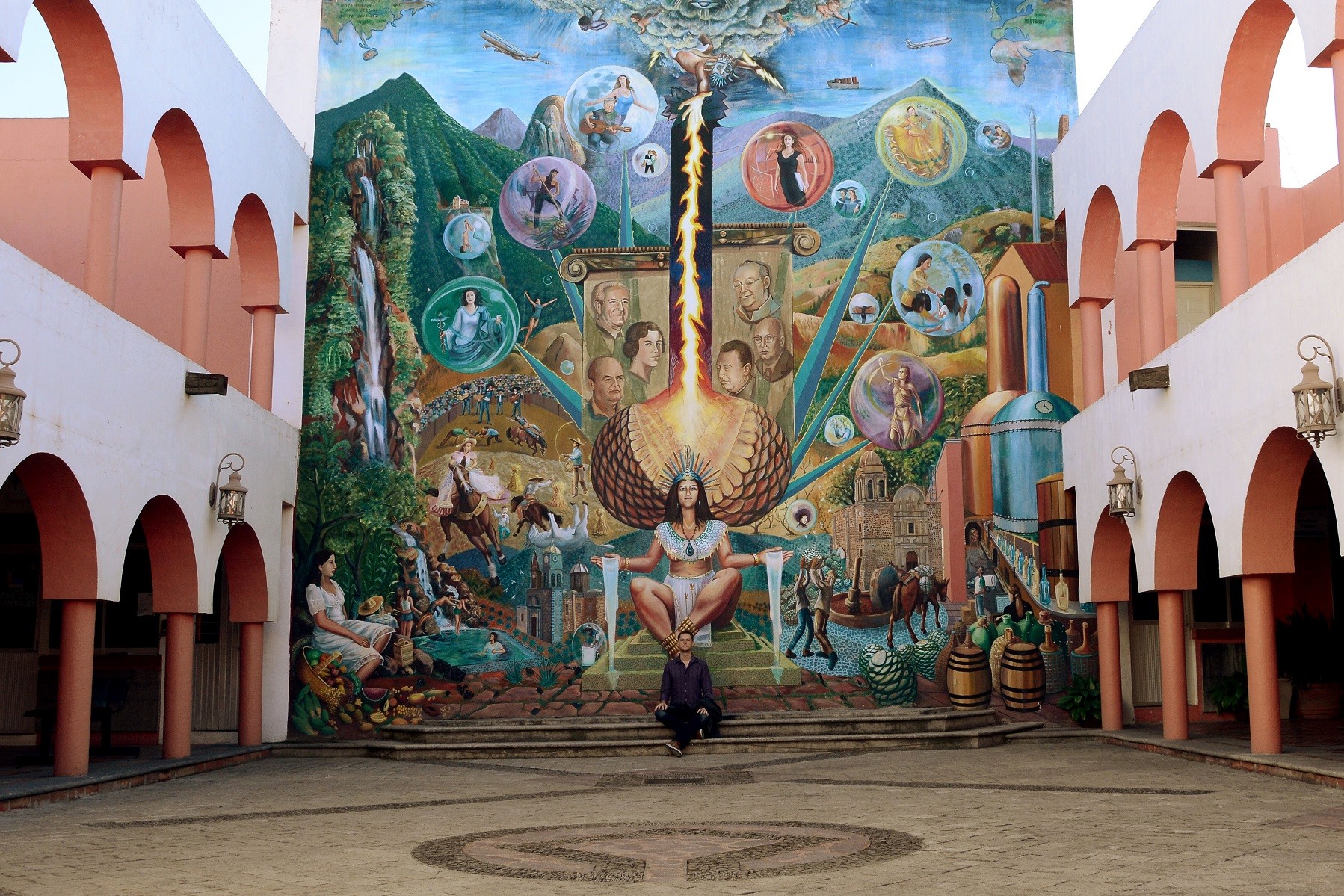Trying peyote out on the ranch in rural Mexico Read more →



Trying peyote out on the ranch in rural Mexico Read more →

Speaking truth at multiple levels can make it more accessible. Read more →

Spanking children may get your point across – but does it come with other, unwanted, messages? Read more →

There are problems with Bitcoin scalability and governance – can Dash provide solutions? Read more →
If you believe government is needed, and someone suggests that it isn’t, you might be rather distressed. You might start to picture bands of rogues roving the land without cease, raping and stealing. In the minds of many statists, this fear is so real that it seems certain. But of course, little is certain in life, and we can no more say for sure that warlords will take over than we can say that they won’t. However, we can at least begin to estimate the likelihood.
If you’re like most people, it’s almost certain that you are threatened by group of people which claims to help you, a group which takes your money without asking first. Just as we can’t be sure that warlords won’t take over in a stateless society, it’s not certain that this violent group won’t grow larger, to expand to a level of control where many are fearful and even people with friends in high places can be destroyed without anyone being punished. In fact, such a case is much more likely to be found in a society with a state, than a society without a state, as the power structures are already there. In a stateless society, if these structures form, they’re likely to be smaller. It’s easier to go from 8 to 10 than it is to go from 0 to 10.

In the end, the reason cling onto these ideas is because of a deep-seated fear. People want to feel like everything is under control, even if it’s by a someone who, in their hearts, they know is a devil. Their fear leads them to fearmonger, spilling endless “what if” cases, none of which can be allayed by logic alone. As I said, nothing in life is certain. Yet, by embracing our uncertainty, and our fears, we can learn to overcome them. It’s scary to stand at the edge of darkness, not knowing what lies within. It takes heart to put your foot over that threshold, yet, that is the only way that humans grow – by putting ourselves in realms where nothing is sure, but everything is possible. Screw your courage to the sticking place, and feel just for a moment, what it would mean to be free.

Maybe there are still some arguments about Trump’s border wall which I haven’t heard yet… But the ones that I have heard are rather pathetic. The wall conversation seems to go like this:
We need a wall to keep people out to stop them taking welfare.
Really? Do naturalised citizens actually take more welfare than natural born citizens on average? Do you have any statistics to back it up?
Hm I uh… I do have some statistics about how immigrants are more likely to vote Democrat.
Alright, that’s something – not exactly what I was looking for though. You don’t have statistics about why they vote Democrat. You know, even if people come to work in your country, they don’t need to have citizenship, voting rights or welfare. People can get residency or working visas.
Ohhh yeah… I’m sure all the socialist politicians will maintain that rule even if it costs them votes.
Okay… but if you’re going to play that card, there’s nothing you can do politically to solve this problem. A wall certainly won’t help. The socialist politicians will just fix things so people can walk right over.
Alright alright, we can go around like this forever. If we didn’t have welfare, we wouldn’t need a wall. But we have, so we do.
So building a wall that costs billions of dollars is a perfectly reasonable, rational and possible thing to expect, but attempting to curb welfare is impractical and impossible. I see.
Here’s an interesting article which talks about why such a wall would be pretty useless: 8 things you need to know about Trump’s wall

When I walk into a church in Mexico, I can’t help but escape the images of death. There will normally be several idols of Christ, bloody and beaten, on a cross or in a coffin. In the Cathedral in Guadalajara, there is a mummy in a glass coffin, which supposedly belonged to a martyr, a young lady beaten to death by her father, enraged by her ambition to be a nun. I saw a similar mummy in Pachuca, Hidalgo, with a similar story. Apparently this story is repeated in churches all over Mexico – an archetype, a story too good to be told just once, like a rerun of ‘I Love Lucy’.
The other day I walked into the sacred art museum, which is attached to the Cathedral. In the first room we walked into, while looking at the paintings, I had the uncanny feeling that the people in the paintings were looking at me, or waiting to look at me. My companion also felt that there was something dark about the place. (Unfortunately, I can’t show you any pictures of the museum as they asked us not to take photographs.) In another room, there was a stand intended to hold books for a chorus, in the shape of a ziggurat or burial mound, with Christ on a crucifix at the top. The whole thing was painted black. Again, I felt I shouldn’t turn my back on it. I wondered about the dark things this object had seen, wondering if children had been abused while perched on its shelves.
In another room, there was a particularly gruesome picture of Christ, apparently already very dead, with Mary Magdalene by his side, holding his hand. His hand was by her mouth, but instead of kissing it she appeared to be sucking it. In front of Christ stood a dark female figure in a black robe with very white skin, tears streaming down her cheeks. I assume it’s supposed to be Mary, but it looked like Death.

I hope I don’t offend anybody with this post, as this is just my experience as an outsider looking in, and obviously there are subtleties that someone more familiar with Catholicism would notice. However, I do think that people should be wary of these types of images. A man might make a fine idol for you to pray towards, and you might even kiss its feet, as I’ve seen many people do. If the man controls the image that you pray to, you can be sure that he also controls you. God needs no intermediaries.
I’ve noticed a few times that when I post articles and videos about ayahuasca in Facebook groups, occasionally I’ll get a rather unexpected and violent reaction, talking about how ayahuasca is an experience for the elite only, that the cost is prohibitive, and when will regular people be able to try this experience which purports to be so life-changing.
When I first saw these comments, I was a little confused, as I’ve taken ayahuasca two times (here in Mexico), and both times it cost somewhere in the realm of $60 USD – more than an LSD trip surely, and perhaps more than a night at the movies, but not exactly in the realm of “maybe if I take out a second mortgage…”
My perspective changed when my buddy Aaron pointed out how the media portrays ayahuasca – with all the poetic visions that go along with it – hiking through the jungle, travelling by canoe along the Amazon to reach a 70 year old shaman holding a palm tree shaker, speaking in an incomprehensible native American tongue, which he later uses to sing incantations, conjuring tigers by the campfire.
Or people read about it in articles like this one from Business Insider casually mentioning the figure of $11,000 without explaining that, well, you don’t have to pay that much.

Of course, in an ideal world, everyone would be able to take this mystic medicine with a shaman who has a 1,000 year lineage, after a month of eating a pure vegan diet, abstaining from X, Y and Z, meditating every day, with spiritual guidance on hand… But, if you can’t get the ideal conditions, sometimes it’s best to just fucking do it. And you can do it.
I’m told that in the US, you can take a ceremony for around $400. In Europe, about €300 – still rather expensive for some. However, new groups are popping up all the time, and that’s sure to drive the price down.
In some countries, you can order the plants online to make the medicine for yourself or find a supplier who makes the brew ready-to-use.
As I said, both times I’ve taken it so far, it cost about $60 USD – 1100 MXN, and for that I slept on the floor of a shaman’s house on my sleeping bag, listening to musicians play hymns and ícaros. But for someone looking for a more all-inclusive experience, I know of at least one group in Mexico which will provide a 3 day retreat with food, accommodation, psychotherapy, and complementary medicines such as rapé, for around 6000 pesos or $310 USD.
Ayahuasca isn’t yet something that you can obtain with extreme ease in a lot of the world. But it is getting cheaper, and it is getting more accessible. When the media tells you that you have to travel to a Peruvian jungle – don’t believe the hype.
This article is for entertainment purposes only; don’t take it as medical advice. If you are going to do ayahuasca, do your research, and especially be aware that psychotropic drugs can interfere with the medicine, introducing serious risks.
I (Kurt) have been posting on the new social media platform, Steemit, for more than a month, and it seems to be promising for several reasons.
One of the most obvious is that, people can get money on there, which means that many starving artists and writers finally have a platform where they can quickly monetise their content, without having to know too much about website design, sales or marketing.
A deeper point – one which will most likely drive the more constant growth of the platform – is that the system is structured to incentivise helpful, constructive interactions. The system is designed to encourage people to be cool. That’s no small feat. I’ve thought in the past, that if someone really wants to change the world, they have to change the incentives, and that exactly what is what the creators of this site have done.
Since joining, I’ve had to stop myself a few times on other social networks, thinking “Is this the way I would phrase this if I were writing on Steemit? Can I find a way to be softer, more compassionate, more inclusive?” Of course, some people persist in unconstructive feedback, even despite themselves, but the signal-to-noise ratio on the site is still extremely impressive.
In this video, I give an introduction to why this new platform is interesting and may be the way of the future, and I read out an article which I published on the platform, which many people enjoyed, talking about what makes the site and its associated currency, Steem, valuable, and the reasons it may well succeed in the long run.
If you enjoy our posts, please have a look at The Paradise Paradox’s page on Steemit where you can join, earn money, and upvote our posts to help support the show! You can also find a lot of additional content which is not posted on this site, with Kurt’s posts on Steemit and Aaron’s posts on Steemit.
Here’s my original article, and here is the article I mentioned by Leah “Stellabella” Stephens.
To download the audio, right click here, and press “Save as”.
To download the audio, right click and press “save as”.
How does it feel to be free?
When you know that nobody can make demands of you. When you know that you are the greatest authority in your life. When you know you get to choose what you can do, and others can choose what is right for them. How does it feel to be free?
When you can travel the world without asking permission, without having to pay to pass an imaginary line. When the skies and the world are open like a great big adventure. When you can cross a continent, without having to prove to anybody who you are. When your face is your passport. How does it feel to be free?
When you can work for whom you like, and whoever likes can work for you, in the way you both choose. When you know your life is your own responsibility, and you know it’s your responsibility to take care of those around you. When you never say “Someone (else) should do something about it.” How does it feel to be free?
When your projects grow like spearmint on a wild and open plain. When you don’t need a licence to innovate. When you know you can make it, because the evidence is all around you. How does it feel to be free?
When everyone you love, you do so not because you’ve been trained to do so, not because you’ve been forced to do so, but because you choose it. When everything you hold dear sits in that purest place of your heart. When your beliefs are aligned with your spirit. How does it feel to be free?
How does it feel? That’s how you should feel.
Cover image modified and used under Creative Commons – https://moyanbrenn.com/